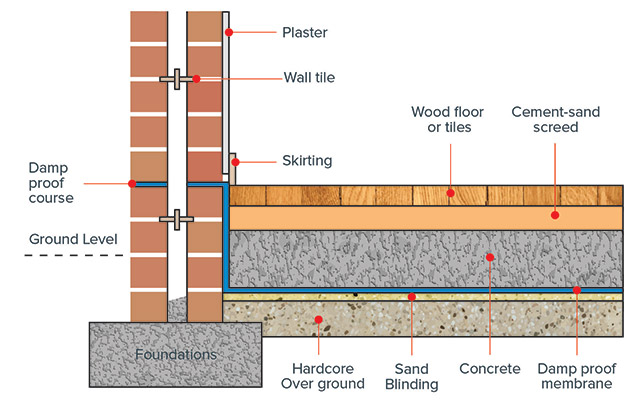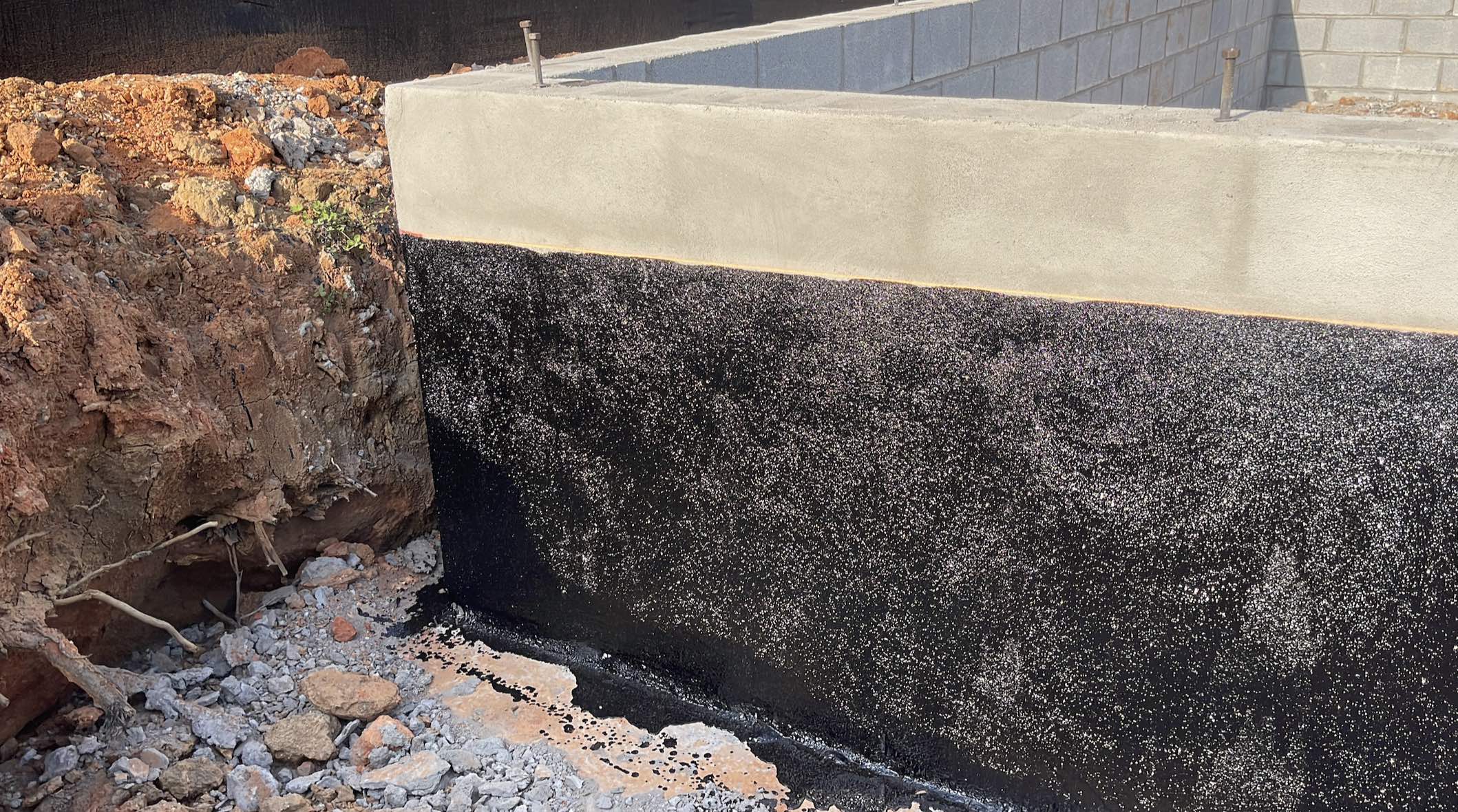What’s the difference between condensation, rising, and penetrating damp with help from damp proofing newcastle
What’s the difference between condensation, rising, and penetrating damp with help from damp proofing newcastle
Blog Article
Discovering the Numerous Techniques and Solutions for Effective Damp Proofing
Moisture in structures positions substantial challenges to both structural honesty and indoor air high quality. Numerous methods and remedies have actually emerged to fight this prevalent issue. From standard damp-proof membrane layers to innovative chemical treatments, each approach supplies special benefits. Understanding these options is important for reliable dampness control. Choosing the best option depends on certain structure conditions and requirements, triggering further exploration into the most effective wet proofing approaches readily available.
Understanding the Sources Of Moisture
Although moisture can emerge from numerous resources, recognizing these reasons is essential for reliable removal. Typically, moisture originates from 3 key sources: rising wet, passing through moist, and condensation. Increasing damp occurs when groundwater takes a trip upwards through permeable materials, such as block or stone, usually because of a lack of a reliable barrier (mould treatment newcastle). Passing through moist is usually caused by exterior aspects, including roof covering leaks, faulty seamless gutters, or harmed walls, permitting water to infiltrate a home. Condensation, on the various other hand, results from excess wetness airborne, commonly exacerbated by inadequate ventilation and temperature level differences, causing water beads basing on surfaces. Recognizing these underlying issues is necessary, as each kind of moisture needs a tailored approach for remediation. Proper assessment aids in identifying one of the most efficient services, eventually securing the structural stability of a building and improving indoor air top quality
Traditional Damp-Proof Membranes

Chemical Damp-Proofing Solutions
Chemical damp-proofing solutions supply a cutting-edge method to avoid dampness invasion in structures. These techniques generally involve the application of fluid chemicals that penetrate masonry and form a barrier against rising wet. Typically utilized chemicals consist of silanes, siloxanes, and various other water-repellent representatives that respond with surface area products to create a hydrophobic layer.The application process generally requires exploration holes into the wall surfaces, injecting the chemical service, and permitting it to cure. This technique is especially beneficial for older frameworks where traditional damp-proof membranes may be not practical. Moreover, chemical damp-proofing can be much less disruptive and a lot more cost-effective than substantial restoration projects.While efficient, these solutions depend upon correct application and ecological conditions for peak performance. Regular maintenance and tracking are important to guarantee the long life of the damp-proofing therapy. Overall, chemical damp-proofing stands for a versatile alternative for safeguarding structures versus moisture-related damages
Cavity Wall Building Techniques
Cavity wall surface building and construction techniques offer countless benefits, particularly in dampness control and power effectiveness. By integrating an air gap between 2 layers of masonry, these walls efficiently reduce water ingress while boosting insulation. This mix not only protects frameworks from moisture however likewise contributes to reduced power usage.
Benefits of Dental Caries Wall Surfaces
When taking into consideration efficient damp proofing approaches, the benefits of cavity wall surfaces stick out prominently. Dental caries wall surfaces consist of 2 separate layers, developing an air space that effectively minimizes moisture infiltration. This design decreases the danger of dampness, as the outer wall functions as an obstacle against rainfall and water access. Furthermore, cavity walls boost thermal insulation, which contributes to power performance by reducing warm loss. They also offer audio insulation, helping to produce a quieter interior environment. In addition, the air gap allows for ventilation, which assists in moisture control and reduces the possibility of mold and mildew development. These benefits not only enhance the total comfort of a structure yet also add to its long life and architectural integrity.
Wetness Control Techniques
Reliable wetness control methods are crucial in tooth cavity wall construction to assure long-lasting protection versus moisture. One primary approach includes the incorporation of weep openings, which assist in water drainage from the dental caries, protecting against build-up. Additionally, making use of breathable membrane layers can help take care of wetness degrees while enabling trapped vapor to run away. Appropriate positioning of insulation is additionally essential, as it ought to not obstruct drain paths. Guaranteeing that the external leaves of the cavity wall are built with waterproof materials boosts overall toughness. Regular maintenance checks are important to recognize any type of clogs or damage early, protecting the framework's honesty. Ultimately, a combination of these methods creates a robust protection versus dampness invasion in tooth cavity wall surfaces.
Insulation and Power Effectiveness
Insulation plays a crucial function in enhancing energy efficiency within dental caries wall building and construction. By integrating protecting materials, these walls create a thermal obstacle that minimizes heat loss and reduces power usage. Efficient insulation not only assists preserve a steady interior temperature level yet additionally mitigates the risk of dampness, as it prevents condensation within the wall surface cavity. Different strategies, such as making use of inflexible foam boards or mineral wool, can be utilized to accomplish suitable insulation efficiency. Additionally, correct installment is vital here to guarantee that gaps and spaces are reduced, which can otherwise compromise power performance. Inevitably, a well-insulated cavity wall surface contributes significantly to total sustainability and reduces heating & cooling costs for homeowners.
Exterior Damp Proofing Approaches
Outside damp proofing approaches are crucial for securing structures from dampness seepage. 2 efficient techniques consist of the application of water resistant membrane layers and the setup of French drains. These solutions help alleviate water build-up and protect the integrity of buildings.
Waterproof Membrane Layer Application
While various approaches exist for avoiding wetness access, the application of water-proof membrane layers remains a very effective exterior damp proofing method. These membranes are generally made from products such as polyethylene, rubber, or modified asphalt, providing a robust obstacle versus water penetration. The setup process entails using the membrane to the outside surface areas of wall surfaces or structures, guaranteeing complete insurance coverage to avoid leakages. Appropriate bond and securing at joints are crucial to making the most of efficiency. Water-proof membrane layers can be used in numerous forms, including liquid coverings and sheet membranes, enabling flexibility based on the particular demands of the framework. This method not only protects buildings from dampness yet likewise boosts their durability and structural integrity.
French Drain Setup
One reliable approach for taking care of groundwater and preventing moisture build-up around a building's structure is the installation of a French drain. This drainage system consists of a trench loaded with gravel and a perforated pipe that reroutes surface area water away from the foundation. Proper installment calls for mindful planning, making certain that the drainpipe inclines away from the structure to help with ideal water circulation. In addition, the area of the drainpipe is essential; it must be placed in areas prone to merging or excess wetness. Regular upkeep, consisting of cleaning debris from the crushed rock and making certain the pipe continues to be unblocked, is essential for long-lasting performance. Eventually, a well-installed French drain can greatly lower the danger of water-related issues in structures and basements.
Inside Waterproofing Techniques
Inside waterproofing methods are vital for protecting a building's inside from wetness seepage and potential water damages. These strategies commonly include the application of specialized materials and strategies developed to create a dampness barrier within the framework. One usual technique is using water resistant coatings or sealants on wall surfaces and floors, which protect against wetness from passing through surfaces.Additionally, mounting interior drain systems, such as sump pumps, can effectively manage water build-up in cellars and crawl areas. An additional method includes the usage of vapor obstacles, which are installed to inhibit wetness motion from the ground right into living spaces.Moreover, dealing with any kind of fractures or spaces in wall surfaces or foundations with proper sealers assures a comprehensive protection versus water breach. By implementing these interior waterproofing methods, homeowner can substantially reduce the risk of mold growth, structural damage, and other moisture-related issues. Proper execution of these techniques is important for lasting protection and building integrity.
Normal Upkeep and Inspection Practices
Regular upkeep and examination techniques are crucial for ensuring the long-lasting efficiency of damp proofing solutions in any kind of structure. Routine checks enable homeowner to identify very early indications of moisture intrusion, such as peeling off paint, mold development, and stuffy smells. These indicators can signify underlying concerns that call for prompt attention.Inspections must be carried out a minimum of annually, concentrating on prone areas like cellars, creep areas, and exterior wall surfaces. During these analyses, homeowner ought to take a look at sealants, water drainage systems, and ventilation to verify they function correctly.Additionally, keeping rain gutters and downspouts is crucial, as blocked systems can lead to water build-up near the structure. Executing a routine upkeep schedule, in addition to timely repair services, can considerably prolong the life-span of damp proofing actions and protect the architectural integrity of the building. Positive actions ultimately add to the total health and wellness and safety and security of the living environment.
Regularly Asked Concerns
The Length Of Time Does Damp Proofing Generally Last?
The period of wet proofing performance varies, usually lasting in between 20 to half a century. Factors such as application high quality, environmental problems, and upkeep practices significantly influence the durability of the moist proofing therapy.

Can I Damp Evidence My Home Myself?
The specific contemplated the feasibility of DIY damp proofing. With correct study and the appropriate materials, it is possible. Nonetheless, they additionally recognized the value of professional support to guarantee long-lasting performance and stop future issues.
What Are the Indications of Ineffective Damp Proofing?
Indicators of ineffective damp proofing include persistent musty smells, noticeable mold growth, peeling paint, wet spots on wall surfaces, and wood decay - mould removal newcastle. House owners ought to deal with these issues promptly to avoid more damage and health concerns
Does Damp Proofing Affect Indoor Air Quality?

Just How Much Does Specialist Damp Proofing Cost?
Specialist moist proofing prices vary considerably, typically varying from $1,000 to $5,000 depending on the residential or commercial property's dimension, the degree of the damp problem, and picked techniques. Each situation calls for a tailored evaluation for exact prices. Commonly, moisture stems from three main resources: climbing damp, passing through moist, and condensation. When taking into consideration reliable damp proofing techniques, the advantages of tooth cavity wall surfaces stand out prominently. Outside damp proofing techniques are essential for safeguarding frameworks from dampness infiltration. While different approaches exist for avoiding wetness access, the application of water-proof membranes stays a very effective outside wet proofing strategy. Signs of ineffective moist proofing consist of relentless musty odors, visible mold growth, peeling off paint, moist spots on walls, and wood decay.
Report this page